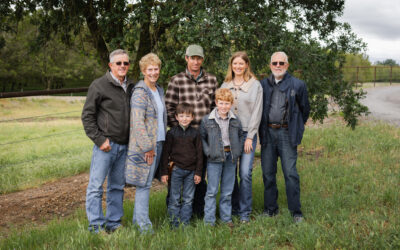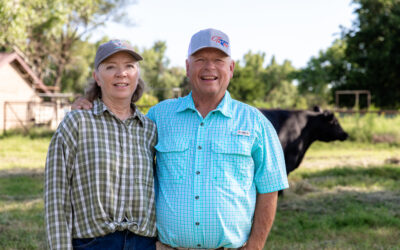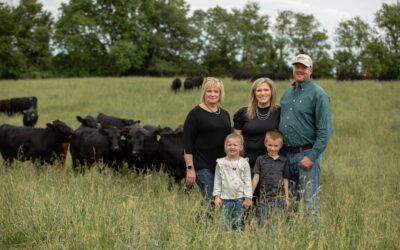
A story unfolds
Soon after I toured his front pasture at the home site, I got to hear the stories of how the farm that used to have Herefords and Holsteins ended up Angus. I learned about David’s simple approach to life, that includes seeing all of his work as the Lord’s work.
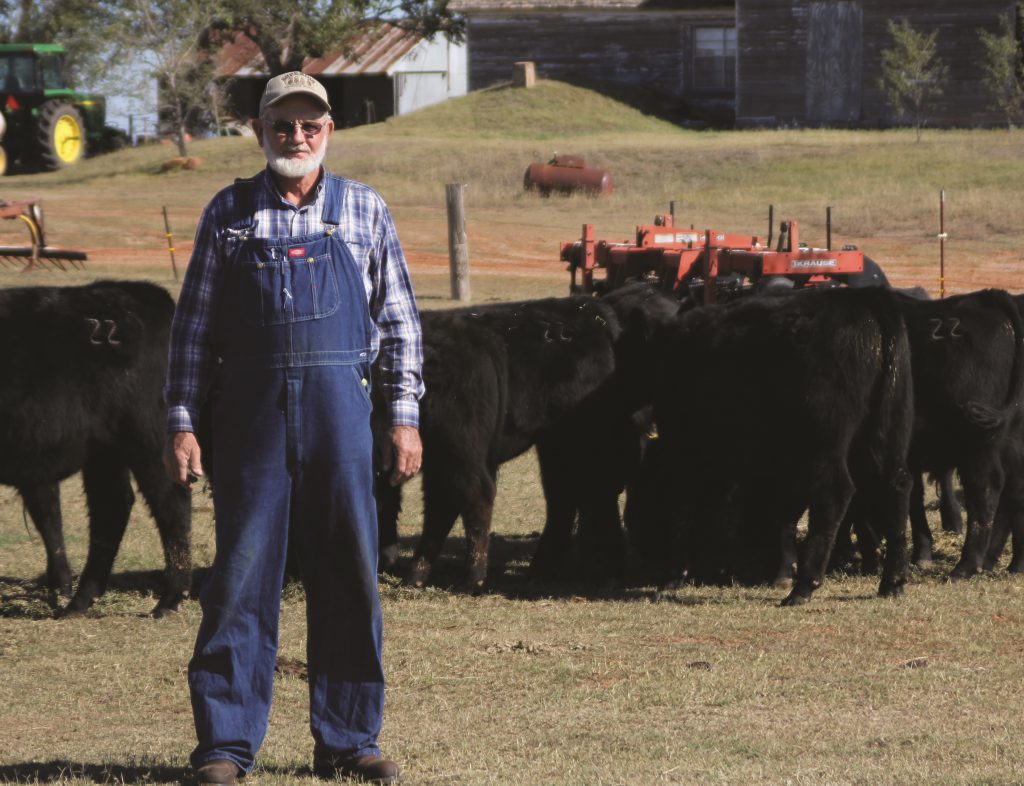
David’s blue eyes lit up, and he laughed a little, talking about his first meeting with Dr. Mike Nichols, of Zoetis.
“I was telling Mike about my program and what I was doing,” David says. “He kind of looked at me and said, ‘You know what, you need to change your program.’”
So he did, improving vaccinations and taking Dr. Tom Noffsinger’s advice on low-stress handling.
Recently, the cattleman looked to add even more technology, on the advice of Nichols and long-time genetic suppliers B3R Ranch.
“Two years ago we tested 33 heifers with GeneMax, and about 2/3 came back below average, so I kept that in mind for culling,” he says, admitting it was “a leap in the dark and big investment” at $44 per head.
The next year, 2/3 of the 42 tested were above average, followed by another 10 in the fall herd, all above average.
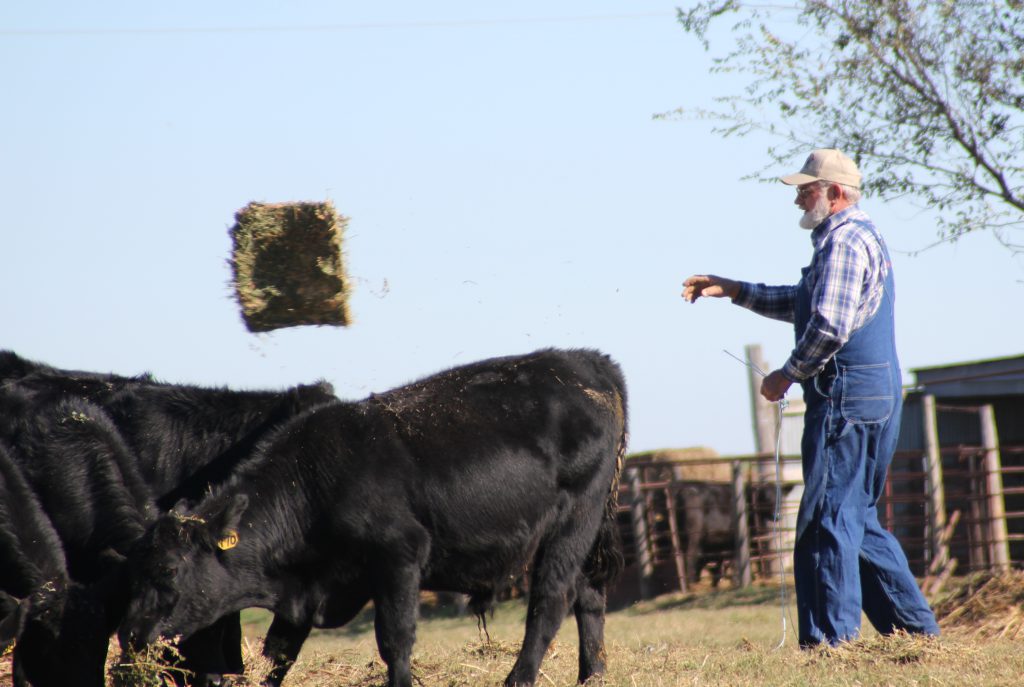
This past fall, while giving heifers calfhood bangs vaccines, he says, “We pulled blood for the test and were able to cull from results. Out of 63, 12 were easily culled from just weaning weights. We were left with 51 uniform heifers, but by culling from there, we’re going to end up with better quality cattle.”
Some good-looking cows went on to the Apache, Okla., auction market, but that means the ones left at home are even more uniform.
“I can keep back the high-scoring cows and heifers. Down the road, your cattle look pretty good,” David says.
His long-time advisor says that’s the right approach.
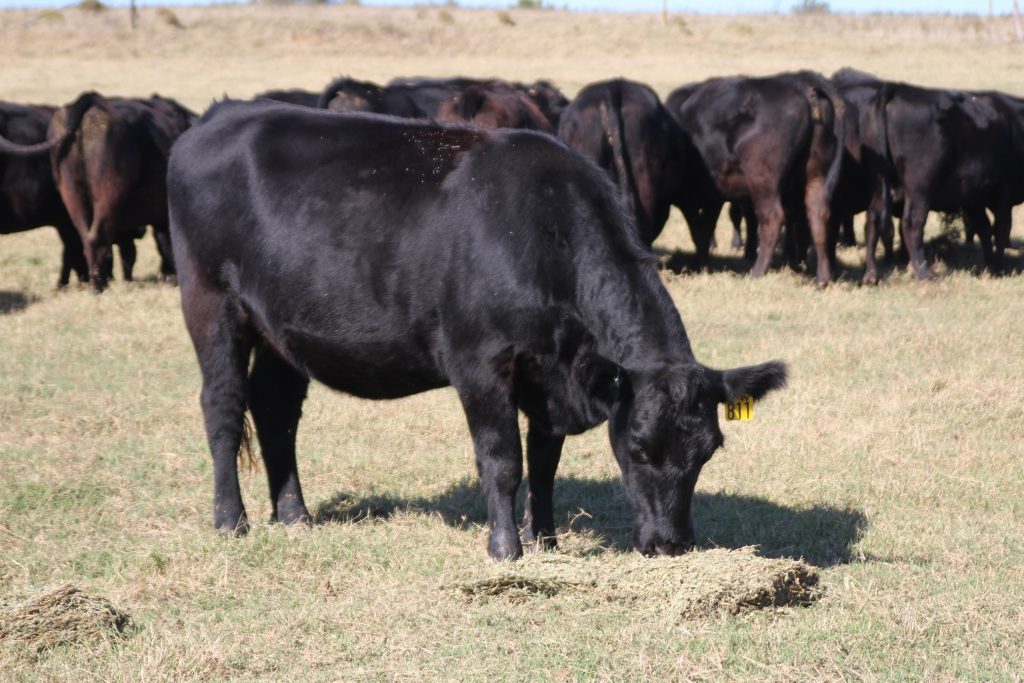
“We never see the returns next week, maybe not even next year. But when you continue to take these steps year by year, then 15 or 20 years later you have a leading program,” Nichols says. “If you neglect those opportunities but keep waiting for a silver bullet, it’ll never happen. Meanwhile the price difference between cattle with more genetic merit and those with less continues to widen because the tools we have today are so effective.”
I’m glad I got to meet David, to see the place where he was born and raised; the cows that are all numbered sequentially from the first one he owned; the older model tractors and the weathered barns.
They’re all part of his story, “The simple gift.” Watch for it in an upcoming Angus Media publication.
~Katie
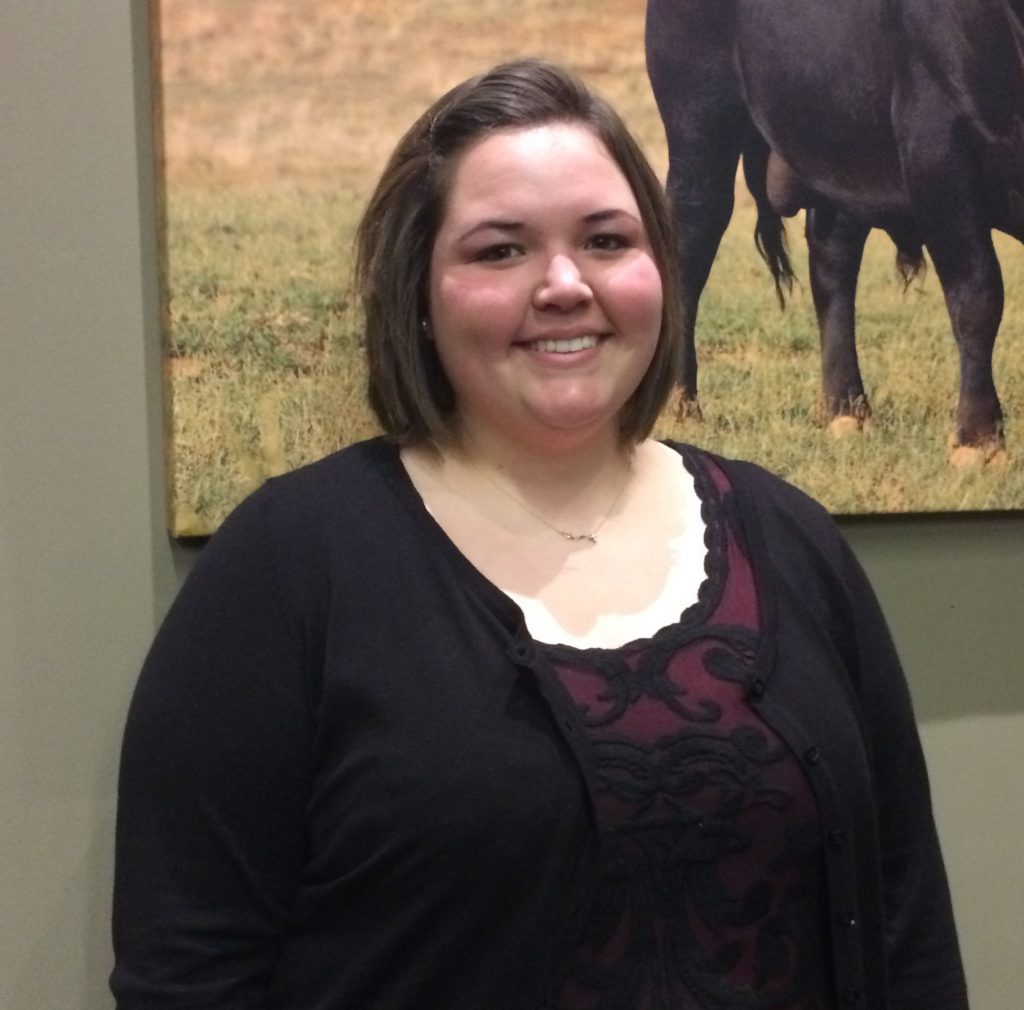
You may also like
Legacy in the Golden Land
On a quiet stretch of Northern California rangeland, a different story unfolds. The Borror family’s legacy modestly speaks through the cattle they raise, the ground they steward. The generations who’ve made a life here demonstrate commitment to doing things right, even when no one is watching.
Helping Hands, Helping Herds
“When I die, I want to come back as one of your cows,” murmurs a friend to Steve Zybach. Full to the brim from an alfalfa ration every day, bountiful fields of lovegrass stretched out across the Texas Panhandle—and owners who leave no ounce of cattle care up for question. The Zybachs’ motivation for this level of dedication to their Angus cattle is simply love.
An Ambassador for All
Joanie, with daughter Lindsey and her husband, Adam Hall, raise registered Angus cattle with two primary goals: producing high-quality seedstock that perform well in a wide variety of environments and ensuring end-user satisfaction. Those goals tie everything together, from promoting Angus to other producers to sharing their story with CAB partners and beef consumers.

